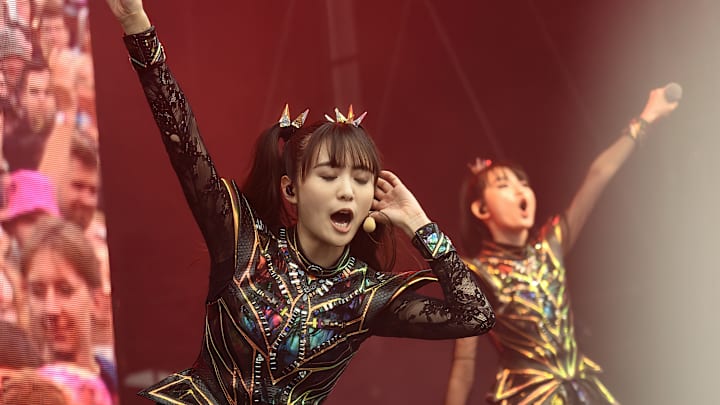It might have been easy back in the fifties—you had your ‘usual’ set of musical genres, from classical and jazz (with few sub-genres there) to easy listening, folk, and its then few variants (blues included), and ‘the intruder’ that was rock. But then, in the sixties, things started to slowly diversify, with jazz and particularly rock music going in various directions.
These days, you probably cannot count the number of genres or sub-genres you can encounter, with metal, rock, and electronic music leading the way. Even Spotify, the boulder of the mainstream, has a service called Obscurify that measures the level of obscurity of a specific playlist.
Certain factors have influenced this - from artists combining different genres to technical developments, from sampling to artificial intelligence getting into play. In any case, it can become a bit hard to navigate with all the new and obscure genres around - some of those are just (or still) in the realm of novelty, while others are bringing us new (and old) sounds worth our time.
Obscure music genres you need to listen to right now
Here are some of the more (or less) obscure genres that just might be worth your attention.
Medieval Folk Rock
This one is not a novelty; after all, it brings elements of medieval folk (the pop of its time) music into a more modern setting, with the rock beat being the key here. It was pretty popular in the late sixties and early seventies, particularly with several artists from the British Isles, with some even reaching the charts.
The names to remember there start with Incredible String Band and include the likes of Steeleye Span, Pentangle, and particularly Gryphon (these guys were truly medieval).
Kawaii Metal
With the popularity that K-Pop and J-Pop enjoy these days, it was only a matter of time before somebody would attempt (and eventually succeed) to combine the cuteness of J-Pop vocals with any form of heavy metal (take your pick), hence the name itself, as Kawaii in Japanese means cute. Shouldn’t work?
Not if you ask the Japanese duo (formerly a trio) Babymetal, which has millions of views and listens on YouTube, Spotify, and elsewhere.
Gothic Country
Original country music was never devoid of dark themes covering everything from loss and betrayal to all forms of murder and torture, and some of the greatest artists of the ‘official’ genre, like Johnny Cash, dabbled with gothic country.
You can add that rock thing to gothic country these days, and numerous artists, from Nick Cave to Bill Callahan and Bonnie "Prince" Billy, paint their countrified themes in very dark tones.
Vaporwave
There is a bit of controversy surrounding this genre, as there seems to be almost no middle ground here - you either love it or hate it. The reasons may be that this genre, which started developing in the 1990s, is heavily based on the sampling of various samples, practically from anywhere, from easy listening to computer game sounds, often piled up one on top of the other.
The results could range from simply maddening to truly intriguing and listenable, depending on mood, too. One of the genre leaders currently goes under the moniker Oneohtrix Point Never (Daniel Lopatin).
Freakbeat
This one is another British invention of a somewhat earlier date. It was developed in the mid-sixties and combined the sound of British Invasion bands that favored R&B with (jazzy) beats and touches of psychedelia. The freakbeat name actually came later, in the eighties, coined (again) by British music journalists. Small Faces and The Pretty Things can easily slot into this genre.
Lowercase
This can fall into the category of one-man invention, as this quite extreme and minimal ambient music is credited (as is the genre name) to electronic artist Steve Roden. Why extreme? Well, on one of his albums (man's), Roden actually used the sounds of paper, which he handled in various ways, and then used loops and other electronic effects to turn them into something else.
Folktronica
At one point in the nineties, Folktronica was hip and all the rage, but somehow, the artists considered part of the movement seemed to move away in other directions. As its name implies, Folktronica is a more or less direct combination of electronics and folk music, with various degrees of each.
Animal Collective started within the genre, and Caribou and The Boards of Canada were also considered part of it.
Hypnagogic Pop
If you checked your (online) dictionary, you know that hypnagogic signifies the state we find ourselves in just before we fall asleep. The term again is a creation of British music journalists trying to describe some of the current artists who are mainly mining the sounds of the 1980s and then, by using some heavy effects (usually, the slower side of those), transforming them into something quite daydreamy.
Toro Y Moi is possibly one of the key exponents of this genre.
Neurofunk
Remember drum and bass? Not many people mention it much these days, but it is still around, most of it in the form of one of its darker-toned offshoots that bears the name Neurofunk. This genre started cropping up in the late nineties as a mixture of techno, funk, house, and industrial music, with names like Noisia and Black Sun Empire seemingly standing out.
Glitch Hop
Hip-hop has several offshoots, glitch-hop being one of those. Glitch-hop combines various lo-fi electronic sounds that can go in several directions with hip-hop. Many refer to the electronic side here as the ghost in the machine. There are some artists here who did make a name for themselves—Tim Necker, Flying Lotus, Venetian Snares.
